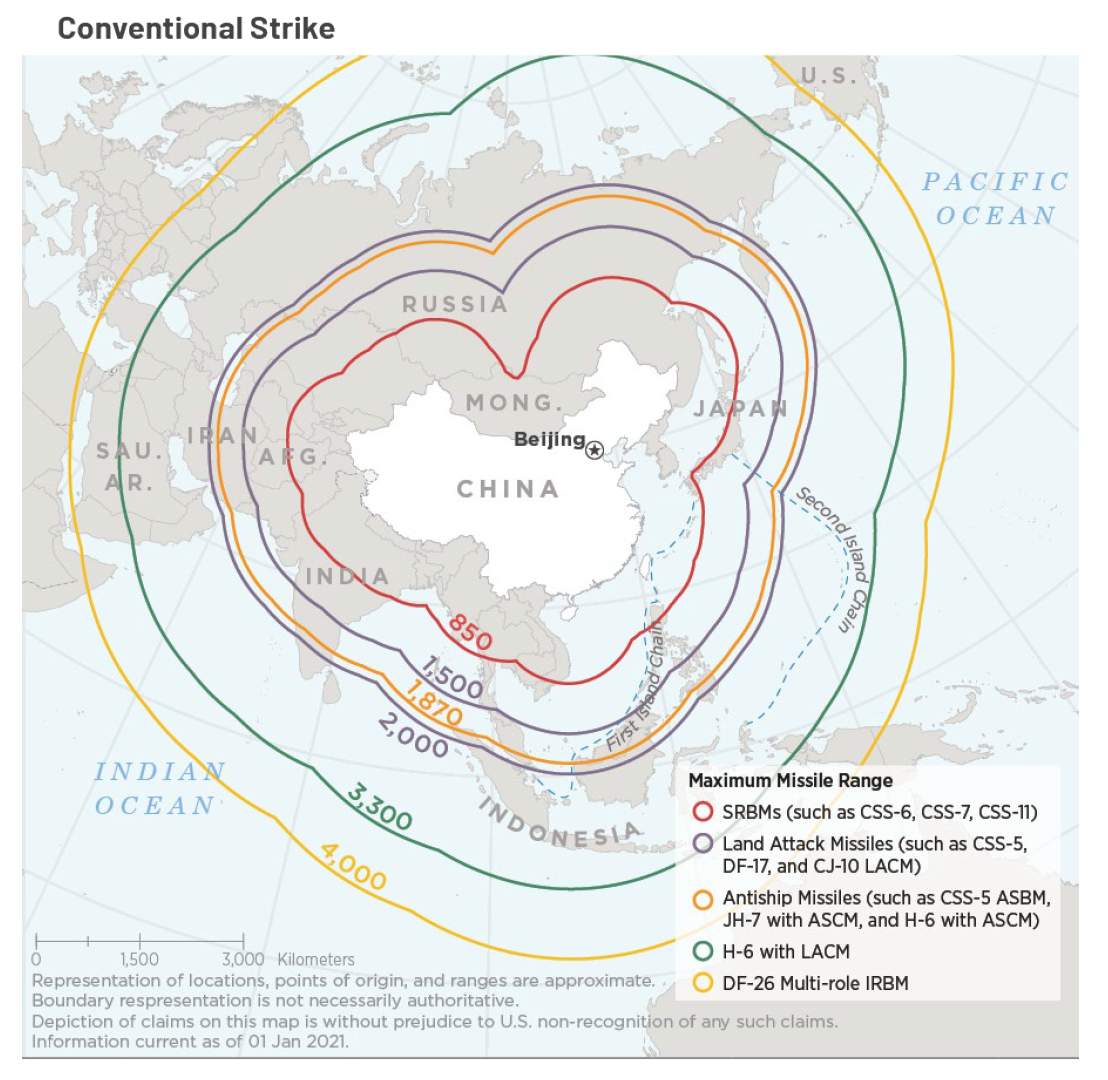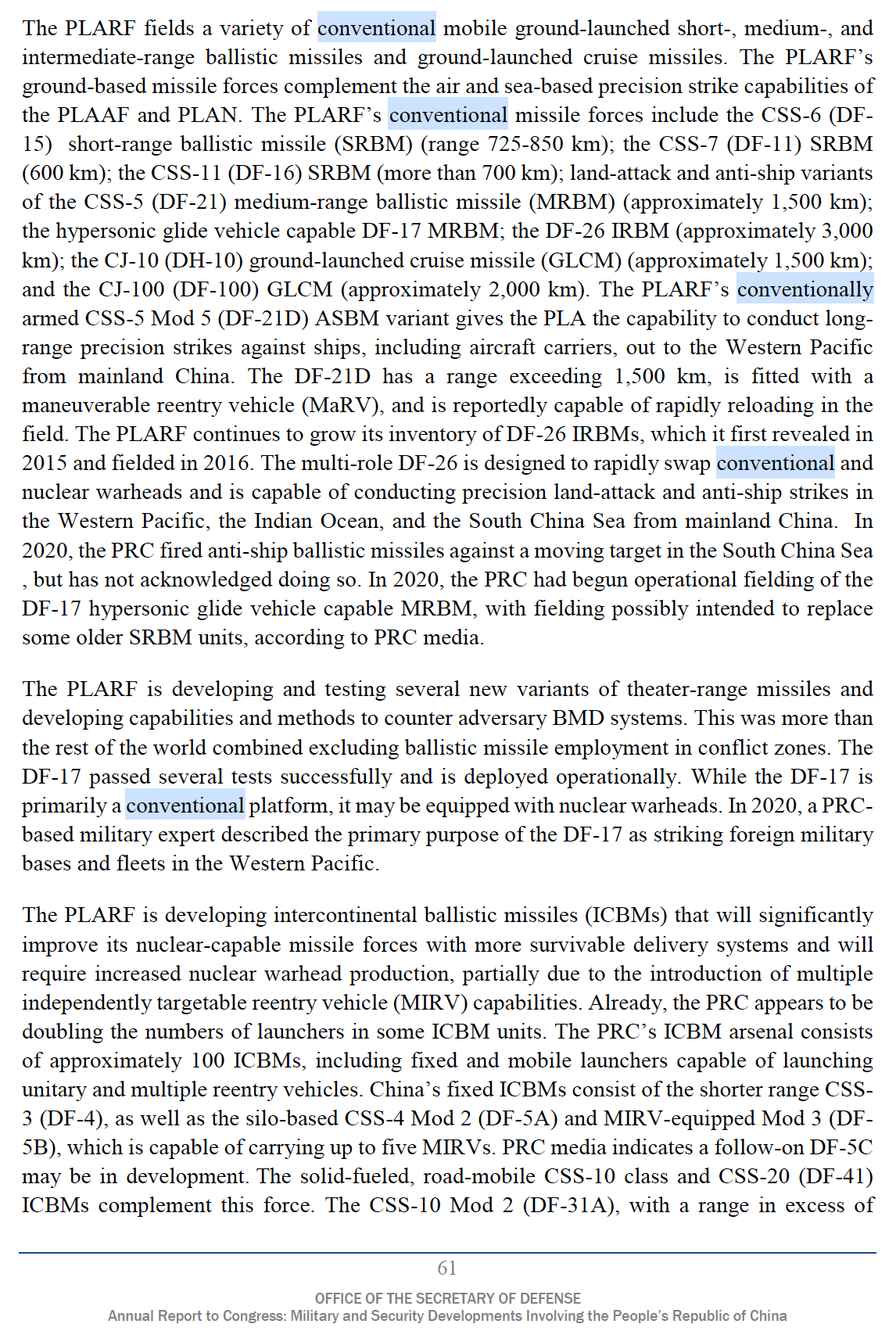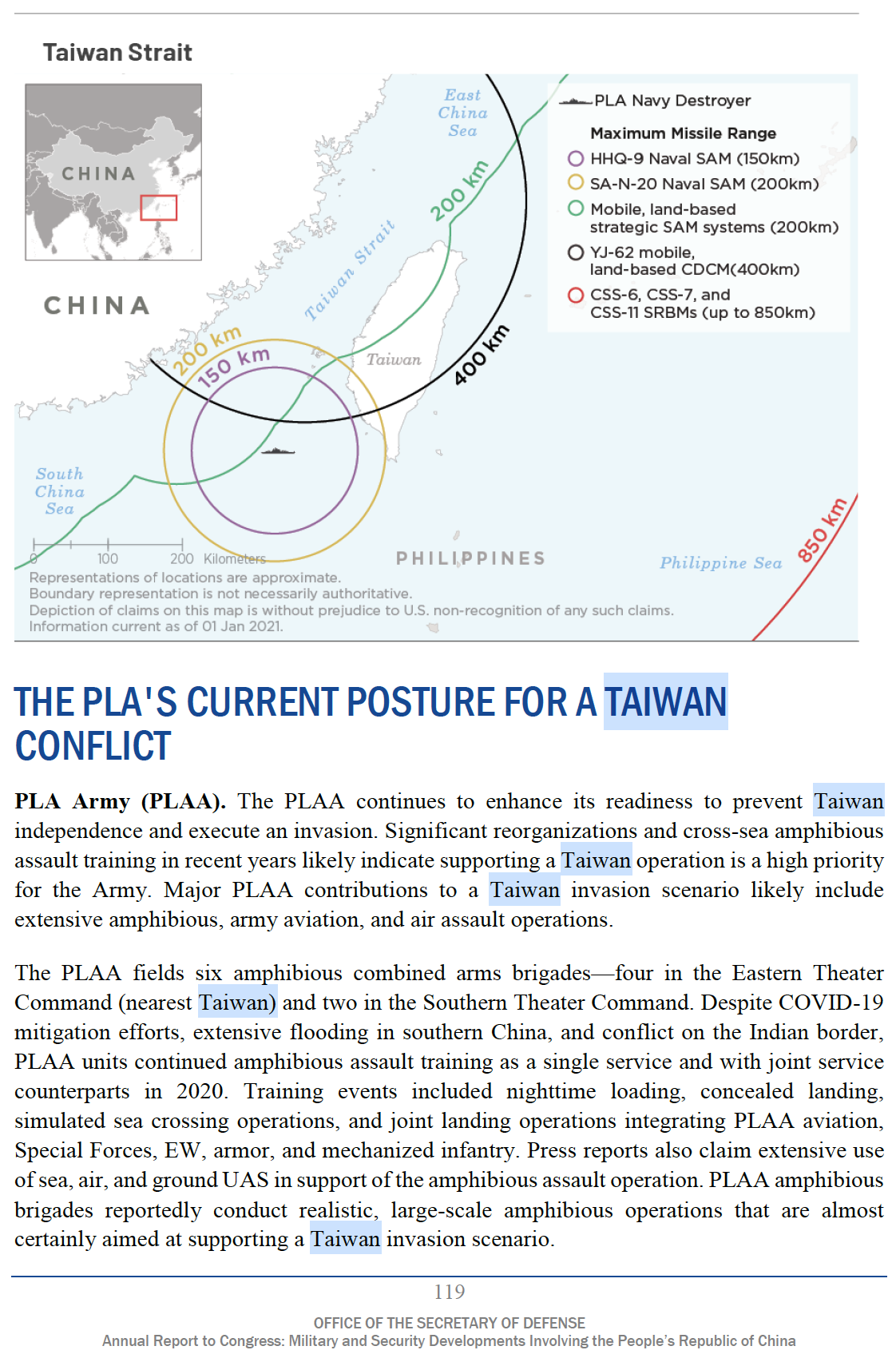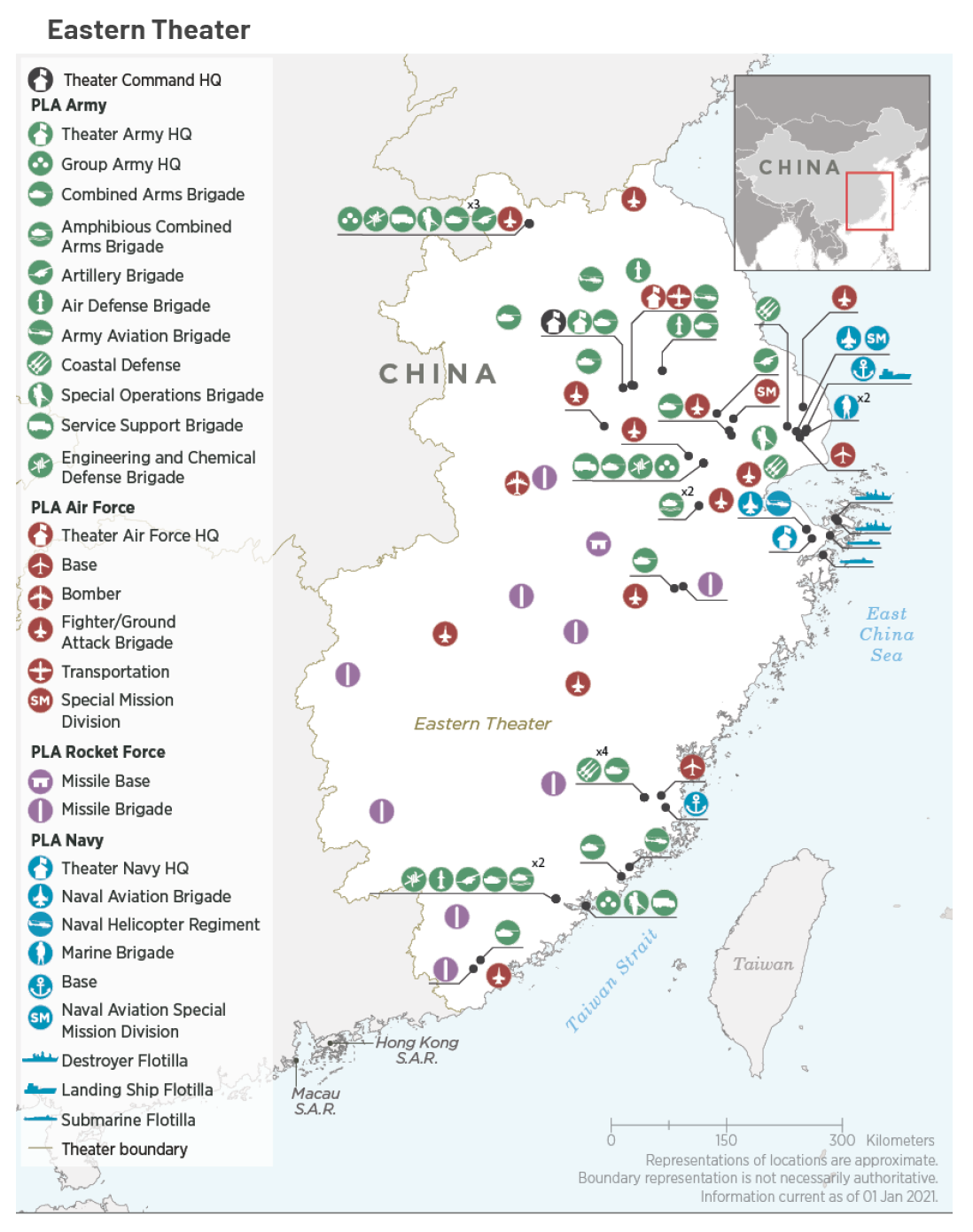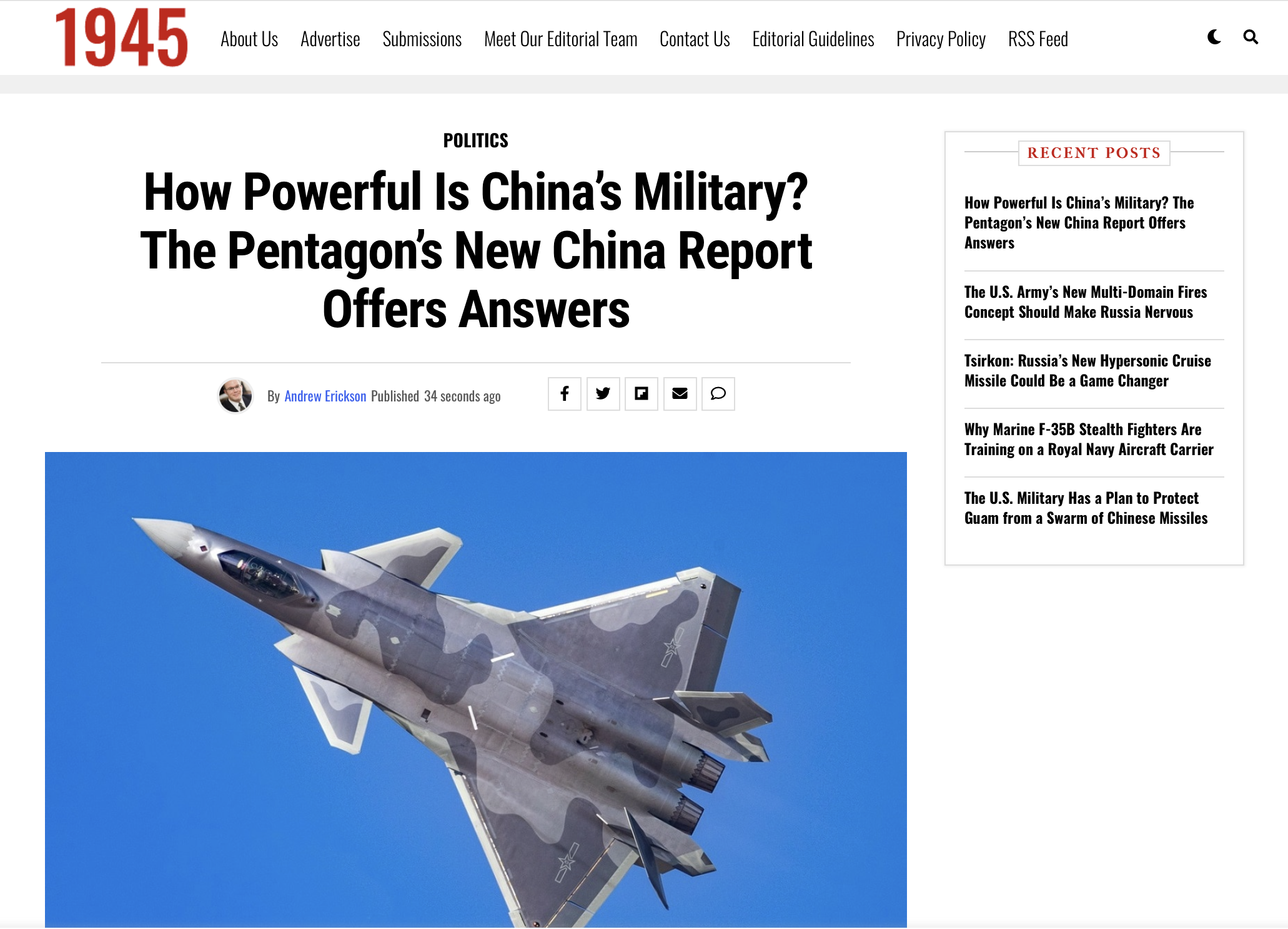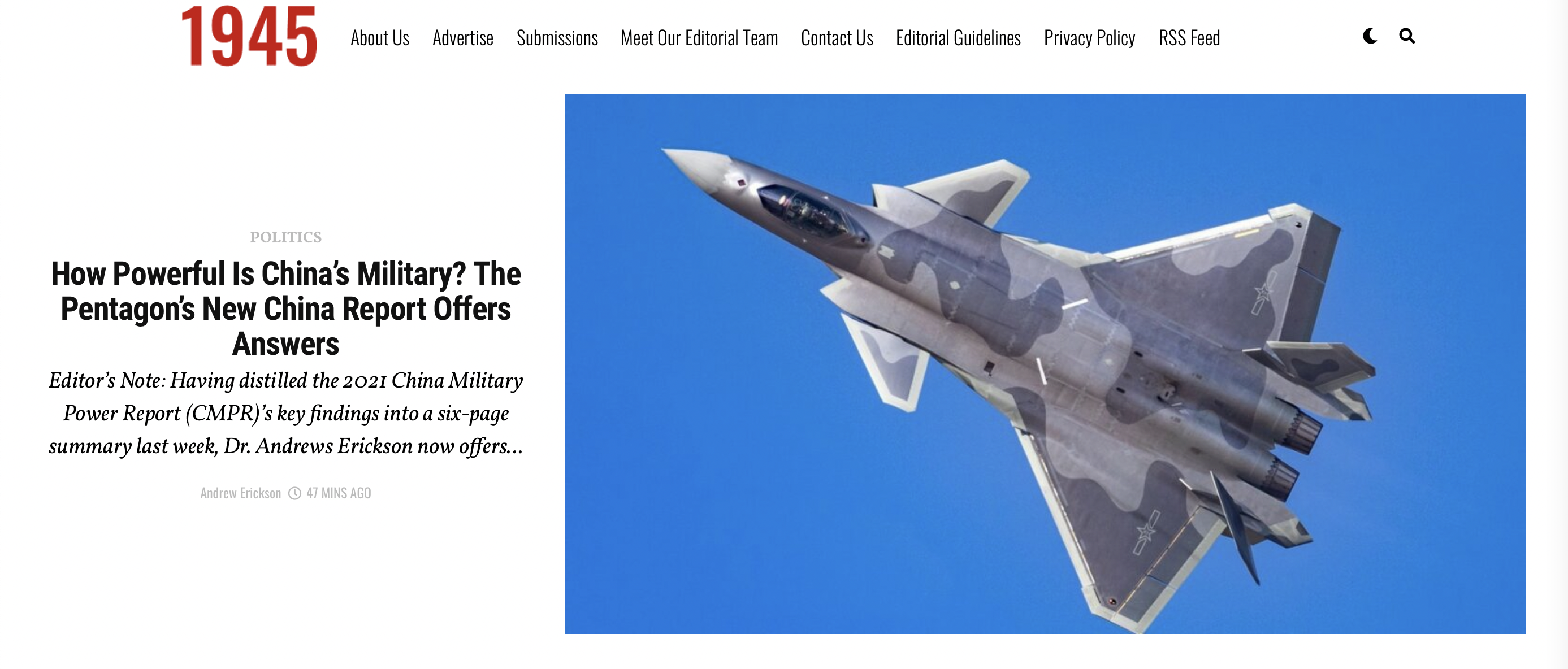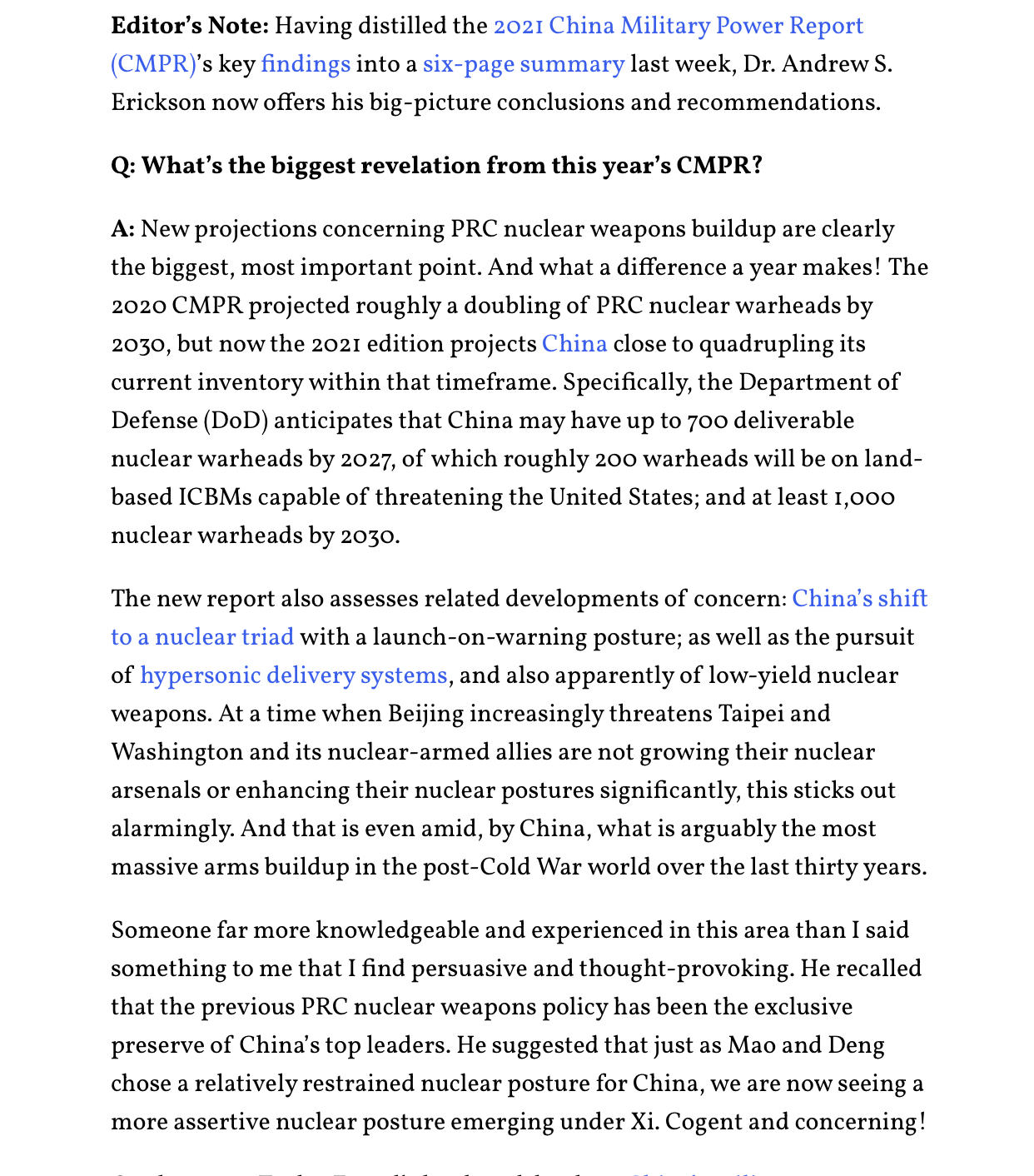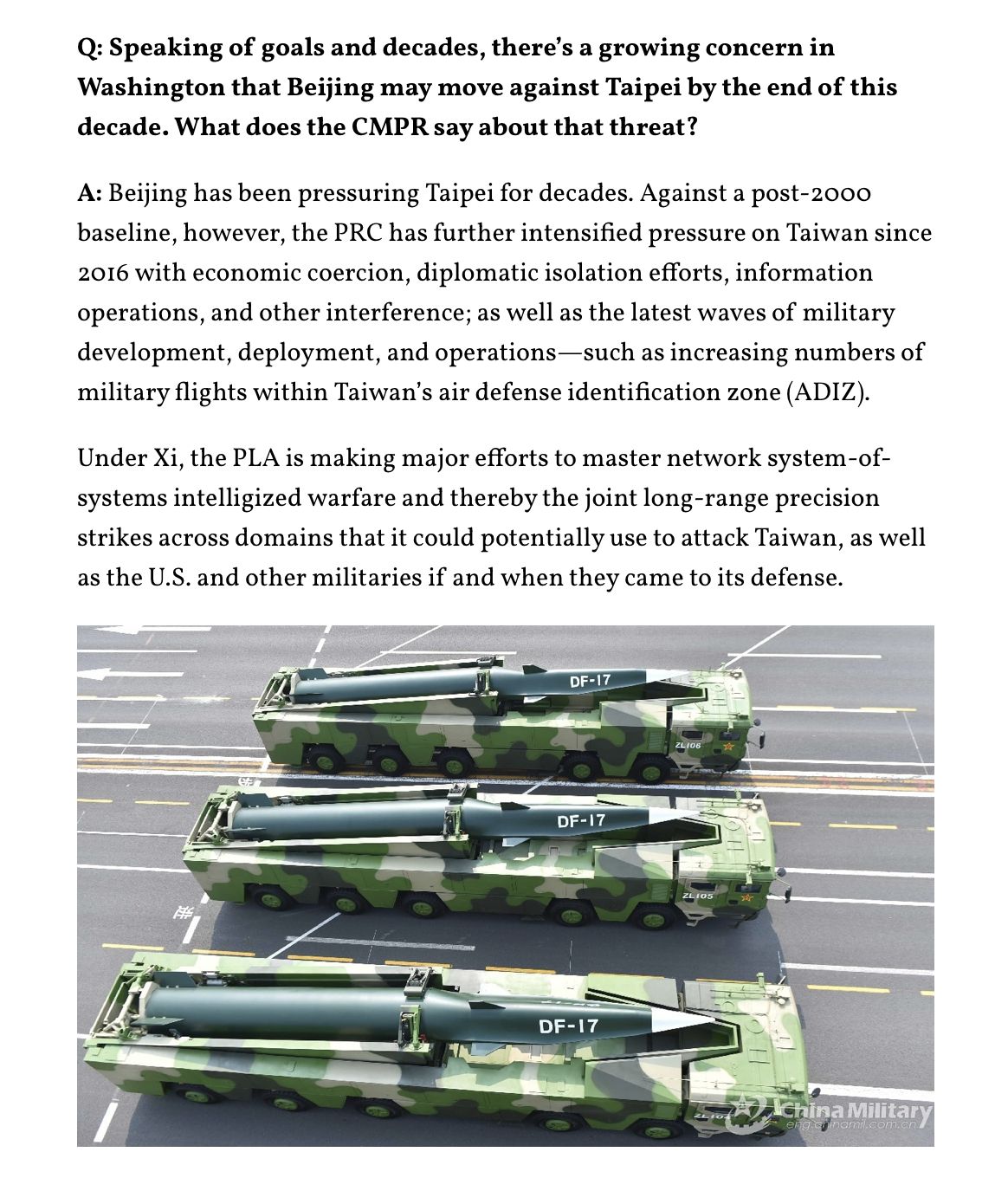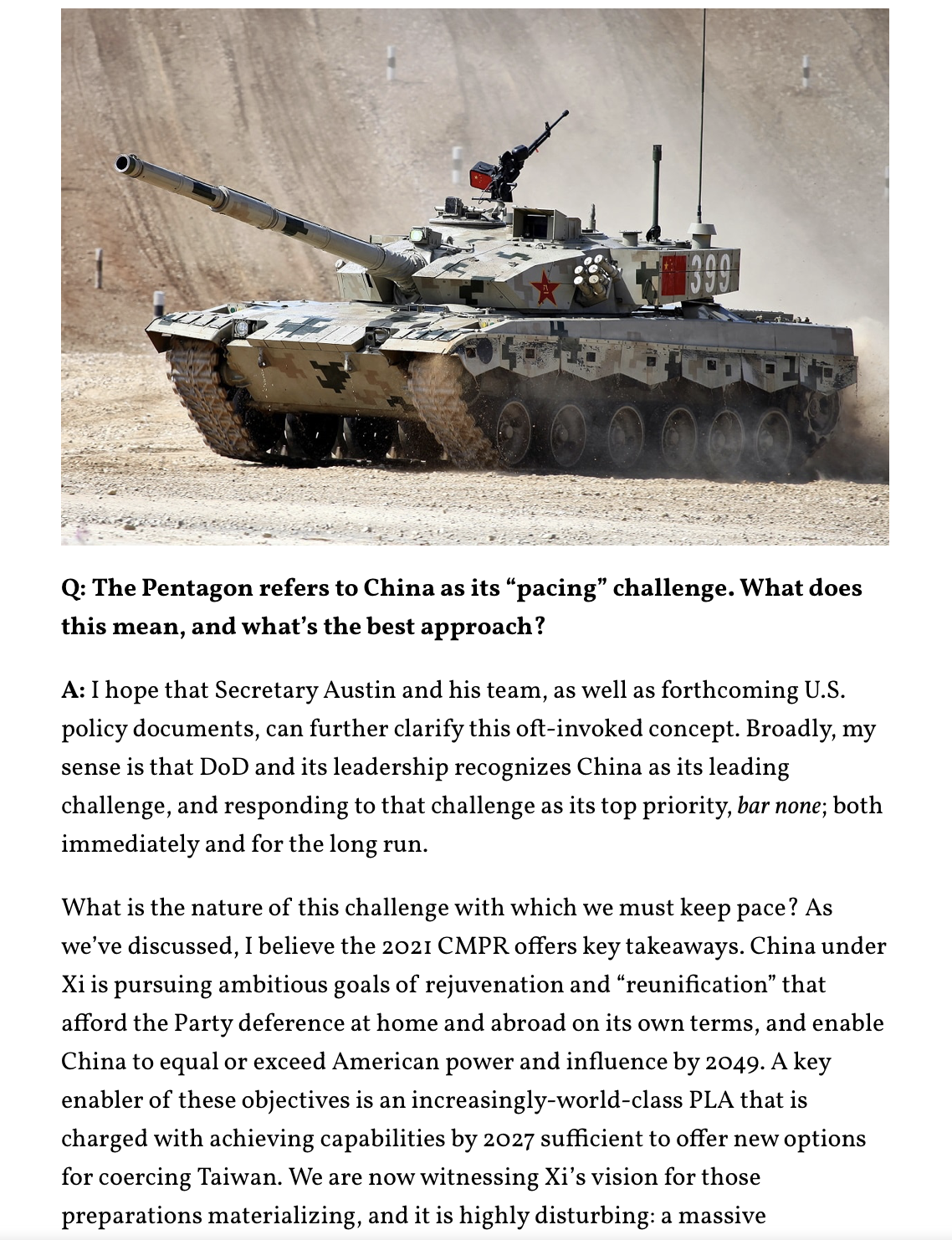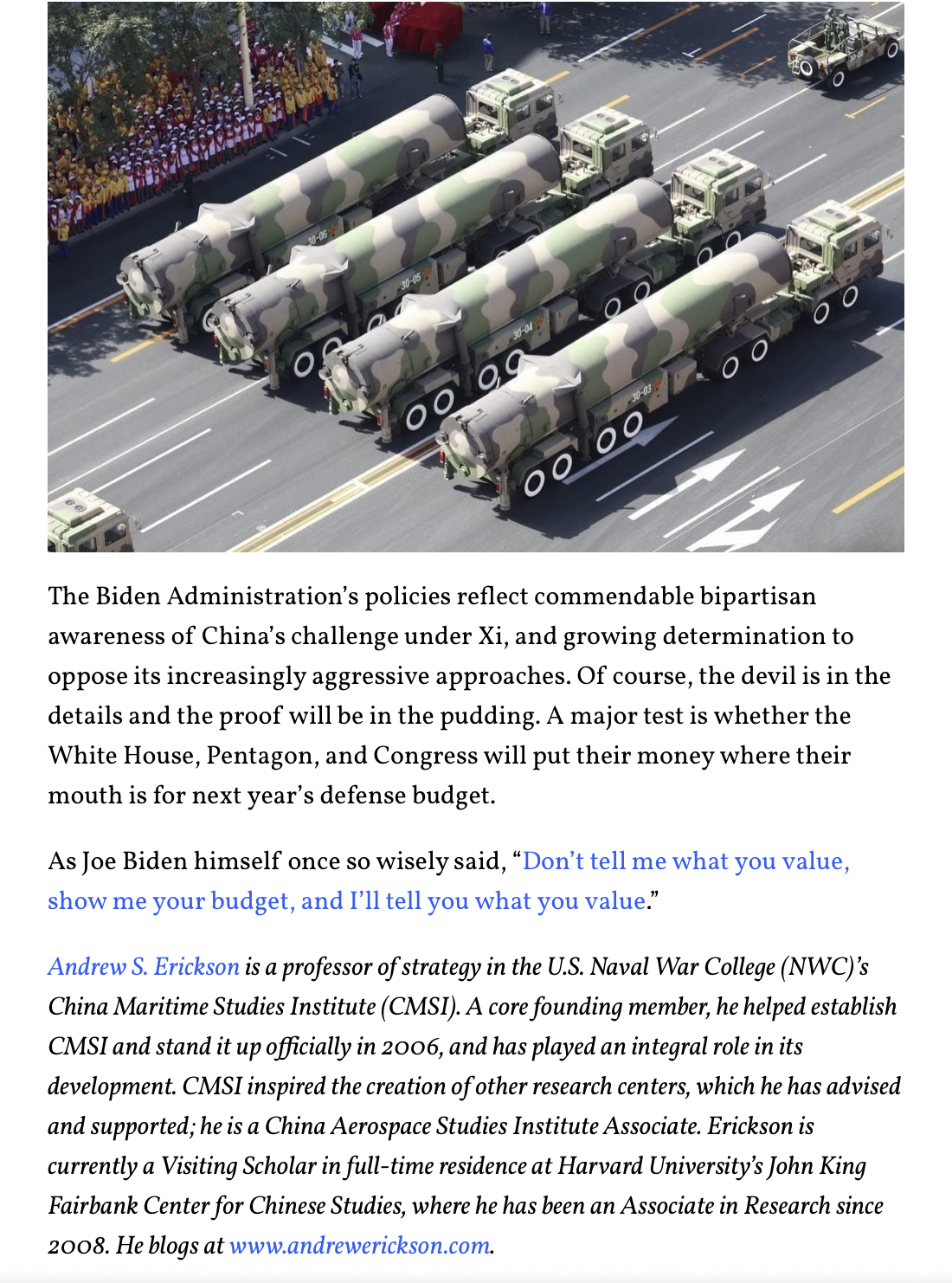Putin’s Ukraine Invasion Underscores: Nuclear Posture Review Must Preserve (Extended) Deterrence 100%, Avoid Dangerous “Sole Purpose” Language, etc.
Bottom line up front: Virtue signaling is no substitute for deterrence signaling!
As tonight’s unfolding Ukraine tragedy underscores only too starkly, the Biden Administration must preserve deterrence, including extended deterrence, 100% in the forthcoming Nuclear Posture Review (NPR). The NPR must avoid not only widely-dismissed “No First Use” (NFU) language, but also the dangerous concept of “Sole Purpose,” and related concepts and wording.
Why would “Sole Purpose” language and the like be unacceptably erosive and destabilizing, and not a no-or-low-cost virtue-signaling sop to arms control idealism? Because it would reduce the credibility and deterrent power of President Biden’s potential responses to precisely the massive conventional offensives in which Russia under Putin and China under Xi show increasing capability and willingness to engage.
Key U.S. allies which have forgone the development of their own nuclear weapons and rely existentially on American extended deterrence fear precisely such contingencies, as well as the erosion of American extended deterrence that an unprecedented declaration of a “Sole Purpose” posture would risk.
Facing reality, and maintaining the viability of vital alliances that President Biden and his team so rightly emphasize in this Decade of Maximum Danger, requires that this Administration not become the first ever to invoke “Sole Purpose” as declaratory policy.
In a so obviously dangerous world, where so much is at stake—and so much is hanging in the balance in real time, unilaterally taking options off the table would be the height of both folly and of national security malpractice.
More broadly, with so little margin left, there is no room for self-induced errors. In addition to the aforementioned risks of undermining of the U.S. extended deterrent, another area of potential strategic self-harm stands out: mis-operationalization of “integrated deterrence.” Under the Biden Administration, the Pentagon has promulgated a concept of “integrated deterrence,” although it remains largely undefined—perhaps awaiting clarification from the set of guiding documents to be released in early 2022, including the NPR. The bottom line is the only thing that matters in deterrence competition is facing an adversary with credible combat power coupled with a credible will to use it. While that power should of course be augmented by allies and partners where and when appropriate—as well as other governmental means that do not always fall under the Pentagon’s purview—those other means are no substitute for military means of deterrence. While it does not always have to be displayed directly, the mailed fist must always be a part of any opponent’s calculus—particularly one as capable and threatening as Russia or China today.
The core focus of the “integrated deterrence” concept should therefore be integrating different U.S. military capabilities; not over-optimistically emphasizing non-military capabilities as an excuse to underemphasize or underfund needed military programs.
As for America’s own deterrence posture and its credible communication to Russia, China, and its allies and partners alike, it is particularly critical that the soon-to-be-released NPR helps hold the deterrent line amid Beijing’s exceptional, dramatic buildup and enhancement of both conventional and nuclear warheads and associated delivery systems. These increasingly threaten Taiwan, as well as all who could seek to help defend it in the event of PRC belligerence; not only the United States but also some of its regional treaty allies. To its credit, the Biden Administration has consistently declared the importance of American allies, including in the Indo-Pacific; but must not now allow for even the smallest shadow of doubt concerning the vital extended deterrence America affords them, within its part of the alliance understanding. The NPR must therefore reflect credible commitment and unshakeable resolve in the darkening shadow of PRC coercion. This would therefore be a catastrophic time for arms control and disarmament idealism to generate NPR language even approaching the idea of “no first use”—or some other conditionality such as “sole purpose” or “fundamental purpose”—that could risk making Washington seem less resolved and its allies seem less secure. “The number one fundamental purpose is to deter a nuclear attack on the U.S. and its allies,” Robert Soofer of the Center for Strategic & International Studies (CSIS) explains, “but the allies want to know that the U.S. will use nuclear weapons to deter large-scale conventional attacks on them.”
A particularly inconvenient truth is that China seeks to be able to achieve maximal military objectives with the world’s largest, most diverse arsenal of conventional ballistic missiles—ideally without resorting to nuclear weapons. If the Biden Administration reduces belief in Beijing or allied capitals that it is willing and able to deter such an existential non-nuclear threat (e.g., to Taiwan, Japan, or Australia) with nuclear weapons, then it will inflicted irreparable damage on American credibility and regional security.
RELATED POLICY RECOMMENDATIONS:
Andrew S. Erickson, interviewed by Harry J. Kazianis, “How Powerful Is China’s Military? The Pentagon’s New China Report Offers Answers,” 19FortyFive, 12 November 2021.
Editor’s Note: Having distilled the 2021 China Military Power Report (CMPR)’s key findings into a six-page summary last week, Dr. Andrew S. Erickson now offers his big-picture conclusions and recommendations.
KEY EXCERPT:
Q: How does this report fit with other U.S. government documents, and what should we expect next?
A: The CMPR is an intelligence-informed policy report that underscores the growing threat that Beijing poses to the vital interests and security of Washington and its allies and partners, particularly in the Indo-Pacific. A panoply of guiding documents, which will further frame and operationalize U.S. national security strategy and policy under the Biden Administration, are reportedly poised to follow soon. These include the National Security Strategy, National Defense Strategy, Global Posture Review, and Nuclear Posture Review (NPR).
It is critical that the higher-level documents to follow fully reflect the full measure and urgency of PRC security threats, as highlighted in the CMPR. For example, Beijing is engaged in an exceptional, dramatic buildup and enhancement of nuclear weapons and associated delivery systems. It increasingly threatens Taiwan, as well as all who could seek to help defend it in the event of PRC belligerence. This includes not only the United States but some of its regional treaty allies. To its credit, the Administration has consistently stated the importance of American alliances, including in East Asia. For these and related reasons, the Administration must not allow for even the smallest shadow of doubt concerning the extended deterrence America affords its allies, and on which they rely existentially. The NPR must therefore reflect credible commitment and unshakeable resolve in the darkening shadow of PRC coercion. This would be a terrible time for idealism concerning arms control and disarmament to generate NPR language even approaching the idea of “no first use” or some other conditionality that could risk making the United States seem less resolved and its allies seem less secure.
FULL TEXT:
Q: What’s the biggest revelation from this year’s CMPR?
A: New projections concerning PRC nuclear weapons buildup are clearly the biggest, most important point. And what a difference a year makes! The 2020 CMPR projected roughly a doubling of PRC nuclear warheads by 2030, but now the 2021 edition projects China close to quadrupling its current inventory within that timeframe. Specifically, the Department of Defense (DoD) anticipates that China may have up to 700 deliverable nuclear warheads by 2027, of which roughly 200 warheads will be on land-based ICBMs capable of threatening the United States; and at least 1,000 nuclear warheads by 2030.
The new report also assesses related developments of concern: China’s shift to a nuclear triad with a launch-on-warning posture; as well as the pursuit of hypersonic delivery systems, and also apparently of low-yield nuclear weapons. At a time when Beijing increasingly threatens Taipei and Washington and its nuclear-armed allies are not growing their nuclear arsenals or enhancing their nuclear postures significantly, this sticks out alarmingly. And that is even amid, by China, what is arguably the most massive arms buildup in the post-Cold War world over the last thirty years.
Someone far more knowledgeable and experienced in this area than I said something to me that I find persuasive and thought-provoking. He recalled that the previous PRC nuclear weapons policy has been the exclusive preserve of China’s top leaders. He suggested that just as Mao and Deng chose a relatively restrained nuclear posture for China, we are now seeing a more assertive nuclear posture emerging under Xi. Cogent and concerning!
On that note, Taylor Fravel’s landmark book on China’s military strategy confirms that nuclear weapons policy is firewalled off from the vast majority of PRC decision-makers. He devotes a separate chapter to China’s nuclear strategy, in part because from the outset “Nuclear strategy was deemed a matter of national policy to be determined by party leadership… Because nuclear strategy was never delegated to the PLA, the views about nuclear weapons held by China’s top party leaders, especially Mao Zedong and Deng Xiaoping, have had an especially powerful effect, even today.” Pending availability of relevant sources—likely a long-term challenge in this area, it is to be hoped that a future edition of Fravel’s magnum opus might someday address Xi’s views concerning nuclear weapons.
Q: PLA capabilities have evolved dramatically since the first CMPR was issued in 2000, and the report has evolved accordingly. Stepping back from this year’s breaking news and concerns, what’s one of the 2021 report’s findings that would have seemed most unlikely two decades ago?
A: The 2021 CMPR, like its immediate predecessor, suggests that the PRC now seeks to equal or exceed American power and influence by mid-century. The report states bluntly: “The PRC’s strategy aims to achieve ‘the great rejuvenation of the Chinese nation’ by 2049 to match or surpass U.S. global influence and power, displace U.S. alliances and security partnerships in the Indo-Pacific region, and revise the international order to be more advantageous to Beijing’s authoritarian system and national interests. This strategy can be characterized as a determined pursuit of far-ranging efforts to expand the PRC’s national power.”
The CMPR summarizes Beijing’s goals of preeminence, to be achieved fully between 2035 and 2049, as follows: “complet[ing] its development and attain[ing] national rejuvenation, realizing an international status that Xi describes as a ‘global leader in terms of comprehensive national strength and international influence.’ A renewed PRC will have attained—among the Party’s many goals—its objectives to field a ‘world-class’ military and assume a leading position within an international order revised in line with Beijing’s overall foreign policy goal to establish what it refers to as a ‘community of common destiny (人类命运共同体)’….”
In so arguing, the 2021 CMPR moves well beyond earlier editions, which typically suggested that Beijing aimed for regional preponderance at most. Indeed, such has previously been the conventional wisdom among many scholars and analysts. It is even quite possible that many PRC officials in power two decades ago did not regard future global preponderance as either realistic or worth taking risks to pursue. Nevertheless, under Xi today, the PRC is far more powerful and pushy than many ever anticipated. It now has additional ambitious goals for the next three decades—the grandest and most strategic guiding policies of any great power today.
Q: Speaking of goals and decades, there’s a growing concern in Washington that Beijing may move against Taipei by the end of this decade. What does the CMPR say about that threat?
A: Beijing has been pressuring Taipei for decades. Against a post-2000 baseline, however, the PRC has further intensified pressure on Taiwan since 2016 with economic coercion, diplomatic isolation efforts, information operations, and other interference; as well as the latest waves of military development, deployment, and operations—such as increasing numbers of military flights within Taiwan’s air defense identification zone (ADIZ).
Under Xi, the PLA is making major efforts to master network system-of-systems intelligized warfare and thereby the joint long-range precision strikes across domains that it could potentially use to attack Taiwan, as well as the U.S. and other militaries if and when they came to its defense.
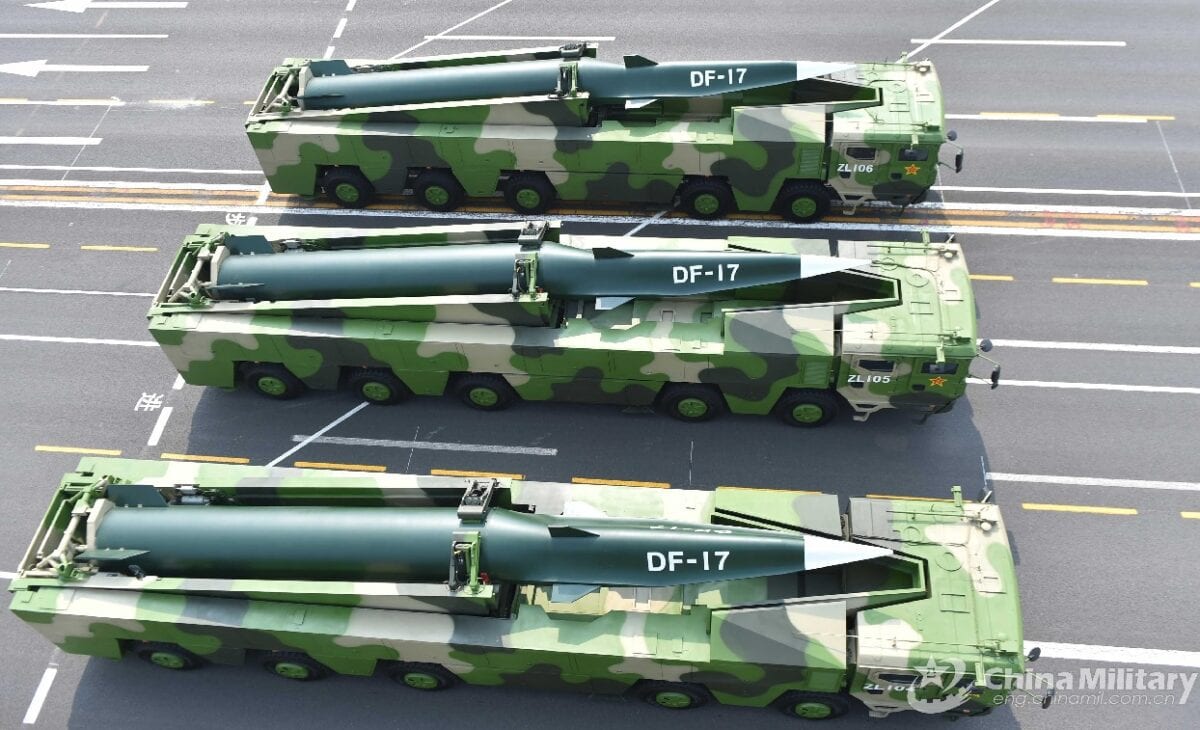
The CMPR cites a confluence of official statements and other developments that suggest this danger is coming to a head. “In 2020, the Chinese Communist Party (CCP) announced a new milestone for PLA modernization in 2027 broadly understood as the modernization of the PLA’s capabilities to be networked into a system of systems for ‘intelligentized’ warfare,” the CMPR emphasizes. “If realized, the PLA’s 2027 modernization goals could provide Beijing with more credible military options in a Taiwan contingency.” Intriguingly but logically, the CMPR elaborates: “PRC media, citing a military source, connected the PLA’s 2027 goals to developing the capabilities to counter the U.S. military in the Indo-Pacific region, and compel Taiwan’s leadership to the negotiation table on Beijing’s terms.”
The CMPR thus supports with official PRC documents and its own public analysis the recent focus by Admiral Philip Davidson, Admiral John Aquilino, and other U.S. officials on relentlessly-mounting PLA threats to Taiwan potentially peaking circa 2027. Further underscoring this confluence of challenges is the unexpectedly-rapid buildup of nuclear and conventional weapons systems the CMPR surveys. As Gabriel Collins and I point out in our recent Foreign Policy article, numerous open-source indicators are aligning similarly. With so many different risk factors coming together, and with so much at stake, the 2020s are the Decade of Greatest Danger for the U.S. and its Indo-Pacific allies and partners as well as the rules-based international order they uphold.
Q: How does this report fit with other U.S. government documents, and what should we expect next?
A: The CMPR is an intelligence-informed policy report that underscores the growing threat that Beijing poses to the vital interests and security of Washington and its allies and partners, particularly in the Indo-Pacific. A panoply of guiding documents, which will further frame and operationalize U.S. national security strategy and policy under the Biden Administration, are reportedly poised to follow soon. These include the National Security Strategy, National Defense Strategy, Global Posture Review, and Nuclear Posture Review (NPR).
It is critical that the higher-level documents to follow fully reflect the full measure and urgency of PRC security threats, as highlighted in the CMPR. For example, Beijing is engaged in an exceptional, dramatic buildup and enhancement of nuclear weapons and associated delivery systems. It increasingly threatens Taiwan, as well as all who could seek to help defend it in the event of PRC belligerence. This includes not only the United States but some of its regional treaty allies. To its credit, the Administration has consistently stated the importance of American alliances, including in East Asia. For these and related reasons, the Administration must not allow for even the smallest shadow of doubt concerning the extended deterrence America affords its allies, and on which they rely existentially. The NPR must therefore reflect credible commitment and unshakeable resolve in the darkening shadow of PRC coercion. This would be a terrible time for idealism concerning arms control and disarmament to generate NPR language even approaching the idea of “no first use” or some other conditionality that could risk making the United States seem less resolved and its allies seem less secure.
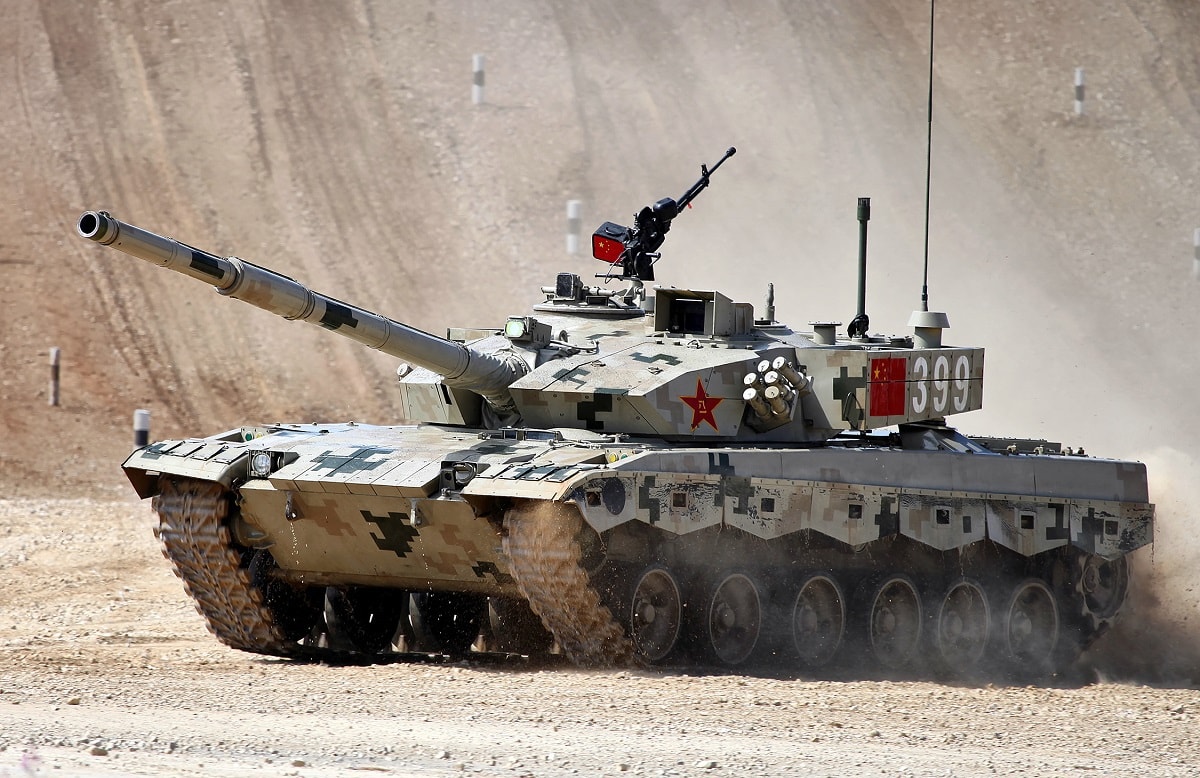
Q: The Pentagon refers to China as its “pacing” challenge. What does this mean, and what’s the best approach?
A: I hope that Secretary Austin and his team, as well as forthcoming U.S. policy documents, can further clarify this oft-invoked concept. Broadly, my sense is that DoD and its leadership recognizes China as its leading challenge, and responding to that challenge as its top priority, bar none; both immediately and for the long run.
What is the nature of this challenge with which we must keep pace? As we’ve discussed, I believe the 2021 CMPR offers key takeaways. China under Xi is pursuing ambitious goals of rejuvenation and “reunification” that afford the Party deference at home and abroad on its own terms, and enable China to equal or exceed American power and influence by 2049. A key enabler of these objectives is an increasingly-world-class PLA that is charged with achieving capabilities by 2027 sufficient to offer new options for coercing Taiwan. We are now witnessing Xi’s vision for those preparations materializing, and it is highly disturbing: a massive conventional and nuclear arms buildup, the latter of which represents a significant departure from the more-restrained posture his predecessors long maintained.
Xi’s precise thinking remains one of the hardest things for outsiders to know, but the PLA buildup outlined in this year’s CMPR matches a logical operationalization of his apparent objectives vis-à-vis Taiwan: develop, deploy, and demonstrate options for every contingency and level of escalation sufficient to contend that China will prevail no matter what happens. Xi’s preference is almost certainly to use a mounting impression of overwhelming might to intimidate the United States and its allies into faltering in policies enabling their intervention in cross-Straight contention to a degree that ultimately erodes their resolve and credibility, and cowing Taiwan’s populace and leadership into acquiescing to his demands. Aware that this may not prove possible, however, he simultaneously charges the PLA with preparing to “fight and win” if called to do so.
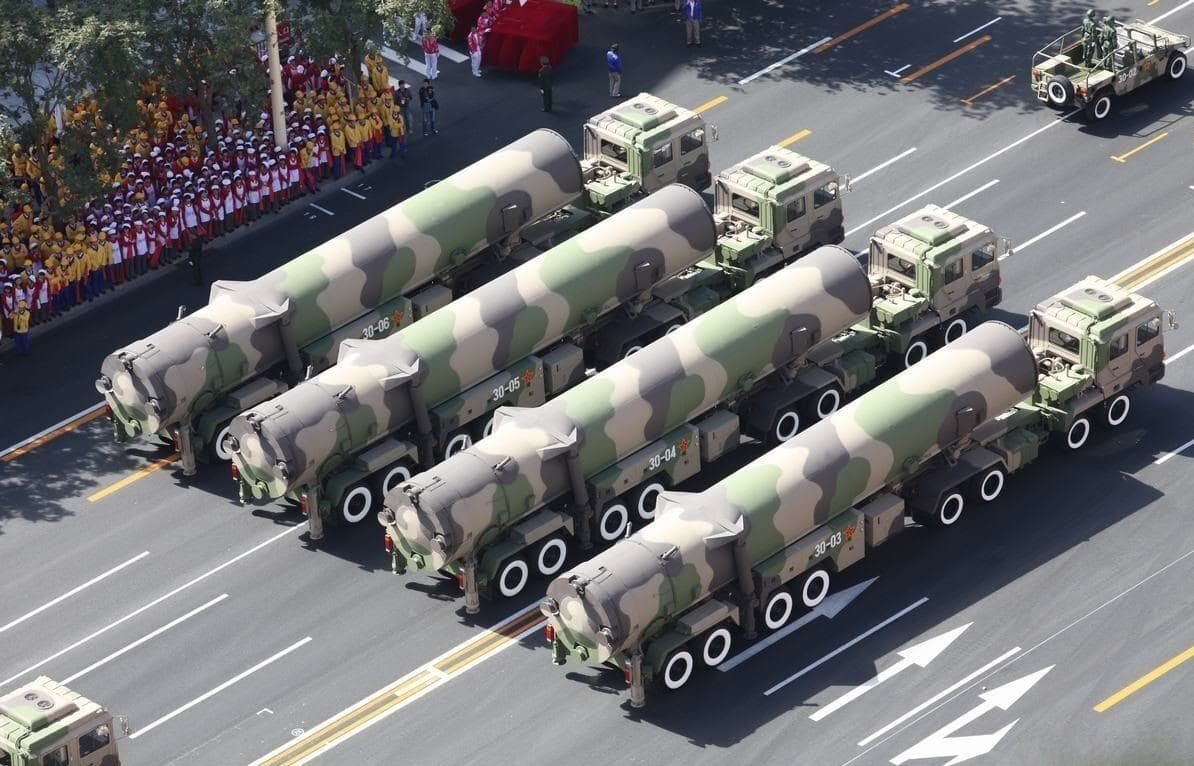
The Biden Administration’s policies reflect commendable bipartisan awareness of China’s challenge under Xi, and growing determination to oppose its increasingly aggressive approaches. Of course, the devil is in the details and the proof will be in the pudding. A major test is whether the White House, Pentagon, and Congress will put their money where their mouth is for next year’s defense budget.
As Joe Biden himself once so wisely said, “Don’t tell me what you value, show me your budget, and I’ll tell you what you value.”
Andrew S. Erickson is a professor of strategy in the U.S. Naval War College (NWC)’s China Maritime Studies Institute (CMSI). A core founding member, he helped establish CMSI and stand it up officially in 2006, and has played an integral role in its development. CMSI inspired the creation of other research centers, which he has advised and supported; he is a China Aerospace Studies Institute Associate. Erickson is currently a Visiting Scholar in full-time residence at Harvard University’s John King Fairbank Center for Chinese Studies, where he has been an Associate in Research since 2008. He blogs at www.andrewerickson.com.

